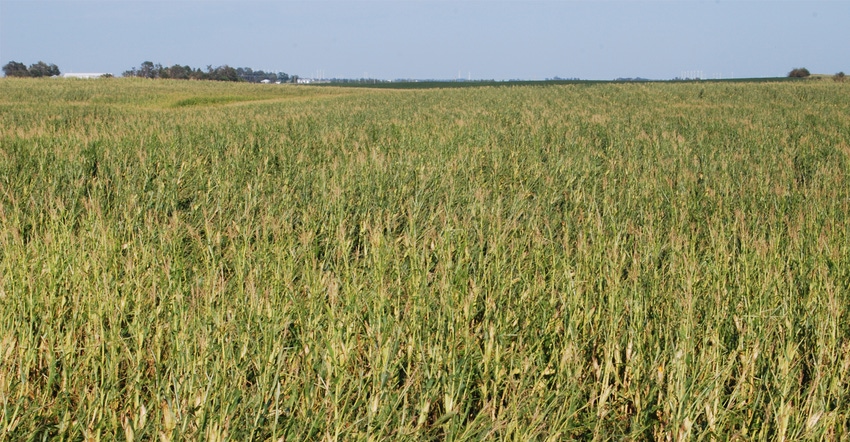August 28, 2020

The widespread destruction caused by the derecho windstorm that raged across central and eastern Iowa Aug. 10 was breathtaking. In the fields a few days after the storm, talking with farmers, I saw the devastating damage. Winds in excess of 100 mph flattened corn and soybean fields, mangled grain bins, and battered farmsteads. It’s something we didn’t need for agriculture in 2020. Crop insurance will help.
Wind is a covered event in multiperil crop insurance and farmers whose insured crop acres have been affected by the recent derecho windstorm may be eligible for indemnity payments. To explain the crop insurance claims process for wind damage, Iowa State University Extension economist Alejandro Plastina has written a new bulletin Practical Guidelines to Crop Insurance Losses Due to the Derecho. Here are some key points.
Will an indemnity be paid?
Affected farmers should file a Notice of Loss with their crop insurance agent within 72 hours of the initial time of discovery of damage or loss, and then follow up in writing within 15 days. When filing a timely NOL is not feasible, a delayed NOL may be accepted. The NOL allows the approved insurance provider to contact the policyholder and decide on a case-by-case basis whether an indemnity will be paid.
That decision will depend both on field conditions and a farmer’s decisions. If the AIP determines that field conditions will prevent farmers from ever being able to mechanically harvest the crop, that production will be considered a full loss.
Otherwise, the farmer can choose to:
settle the case based on appraised production
take the crop to harvest
If a farmer chooses to harvest the crop (even if they chose Option 1 in the first place), the farmer must accept the highest of harvested production or appraised production for claims purposes. Farmers who choose Option 1 first and then decide to harvest the crop must file a revised claim.
Plastina says the information provided in the publication is for reference purposes only and does not change the terms of the crop insurance policy. He adds, “Talk to your crop insurance agent about specific questions related to your crop insurance coverage.”
About 87% of corn and 90% of soybean acres planted in 2020 are protected by crop insurance purchased by farmers in the spring. Crop insurance is an effective risk management tool but is not designed to make farmers whole in the event of loss or damage to their crops, Plastina says. Just like with auto insurance, all policies have a deductible. About 95% of the insured acres are under the Revenue Protection policy. The most comprehensive RP policy has a 15% deductible that can easily amount to more than $100 per acre for corn and $55 per acre for soybeans.
If you need assistance with stress and disaster management, contact the Iowa Concern Hotline 800-447-1985 or extension.iastate.edu/iowaconcern.
You May Also Like




